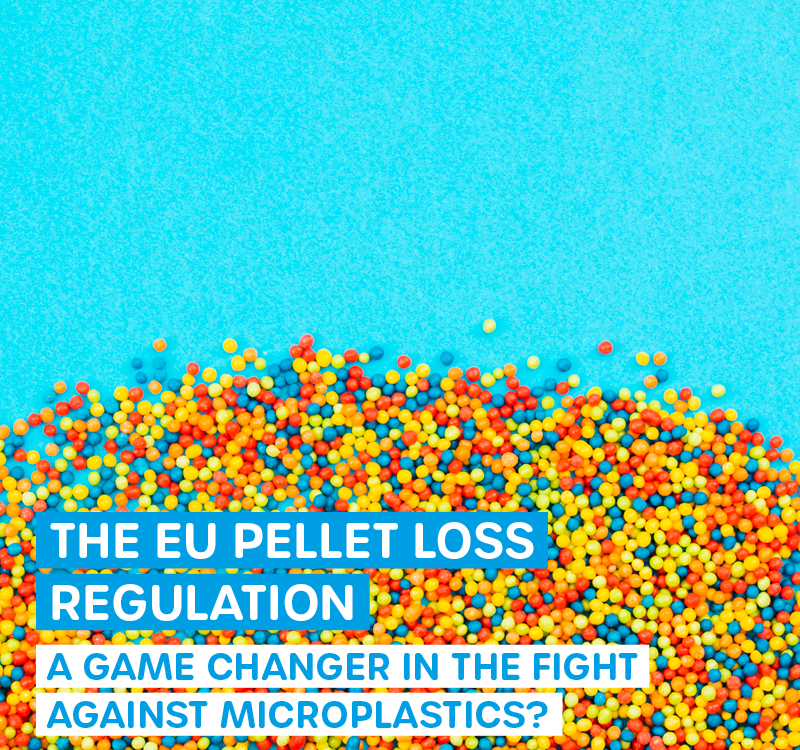
Microplastic Mapping in Cities, Counties, and Rivers
19. August 2025
Spread Love, Not Microplastics
23. August 2025The Future of Sustainable Technologies: Microplastic Removal through Standardized Impact Measurement with Life-Cycle Assessments
In an era where environmental technologies are sprouting like mushrooms and every provider advertises their solution as "the most sustainable," a fundamental question arises: How can we objectively evaluate which technologies truly have a positive environmental impact? The answer lies in scientifically based impact measurement through Life-Cycle Assessments (LCA) - a methodology that finally puts an end to greenwashing and instead relies on hard facts.
The standardization revolution has already begun.
Current research shows an exponential increase in LCA research: With an annual growth of 30% in LCA publications since 2010, 47% of all LCA publications since 1991 were produced in just the last four years. The necessity of systematic and comprehensive consideration is becoming increasingly important from economic, ecological, and societal perspectives, with Life Cycle Assessments (LCAs) standing out as powerful tools for measuring the overall environmental benefits of improved wastewater treatment systems. A groundbreaking study on microplastic removal from industrial wastewater exemplifies how LCA-based evaluations not only make technologies comparable but also pave the way for systematic optimization.
Microplastics as a litmus test for sustainable technologies
Microplastics represent one of the most complex challenges of our time. Their extreme persistence in the environment leads to slow degradation rates and continuous fragmentation into even smaller MPs, resulting in constantly increasing pollution levels and placing ever more stress on aquatic and terrestrial ecosystems. Simultaneously, current research shows that they are not only an environmental pollutant but also pose a health risk to humans.
The latest scientific findings from 2024 clarify: "The penetration of microplastics into terrestrial and aquatic ecosystems has become a significant environmental problem in recent years. Due to their slow disposal rate, MPs are ubiquitous in the environment." Further research results confirm that environmental hazards from microplastics from improperly disposed plastic waste are greater than those from plastic debris and are amplified by high concentrations and catchment depths.
The complexity of the microplastic problem makes it an ideal litmus test for the performance of LCA methods. Here, it's not enough to consider only the direct removal performance - the entire life cycle of the technology must be examined.
How Life-Cycle Assessments revolutionize technology evaluation
A Life-Cycle Assessment follows a standardized four-phase approach according to ISO 14040 and 14044:
- Goal and Scope Definition: Definition of the evaluation purpose and system boundaries
- Life Cycle Inventory (LCI): Recording of all material and energy flows
- Life Cycle Impact Assessment (LCIA): Evaluation of environmental impacts
- Interpretation: Analysis of results and derivation of action recommendations
LCAs are adaptable and can be adjusted to specific regional contexts, which is a valuable feature given the differences in wastewater management strategies and energy production practices between different countries.
Why the entire life cycle is crucial
The true value of an LCA lies in its holistic approach. LCAs examine inputs (resources, including materials and energy) and outputs (emissions, waste, and desired products) "from cradle to grave". They consider the entire product life cycle from resource extraction and material processing, to manufacturing and production, to use and then to collection, processing, and disposal.
An impressive example is provided by the study on microplastic removal using Wasser 3.0 PE-X®: The total reduction of impacts from filter fleece consumption when considering the optimized circular model is over 99%, resulting in an impact of 1.0 kg CO2 per m³ of wastewater. This clearly shows how seemingly small process optimizations can have massive environmental impacts - but only when considering the entire life cycle.
Standardization as the key to comparability, with direct technology comparisons in the same application field coming into focus
LCAs provide a framework for measuring environmental impacts and are designed to facilitate decisions. Standardization through LCAs enables objective comparisons between different technology solutions in the same application area for the first time.
Groundbreaking research from 2024 shows how characterization factors for microplastics composed of polypropylene (PP), low-density polyethylene (LDPE), and polyethylene terephthalate (PET) microplastics are developed. These are integrated into the ReCiPe2016 method and applied to two consumer packaging films to show the relevance of including plastic pollution in LCAs. Current studies confirm: "With the continuous increase in plastic production, it is imperative to carefully examine their environmental profile through a Life Cycle Assessment (LCA)."
This enables companies to make informed decisions based on scientific data rather than relying on marketing promises.
We make internal sustainability upgrades measurable
During the evaluation of environmental impacts of a product or industrial activity, an LCA serves to identify hotspots - points in the life cycle that have significant negative impacts on the environment. This hotspot analysis is crucial for internal process optimizations.
The revolutionary power of MarILCA integration
A study from 2023 proposes a novel approach by integrating LCA methodology with recently developed characterization factors from the MarILCA project. This integration enables consideration of both the benefits of waste reuse and the final impacts of disposed MPs on the ecosystem.
This integration exemplifies how LCA methods continuously evolve and enable increasingly precise evaluations. The latest developments in 2024 show significant progress: The MarILCA working group developed new characterization factors for macroplastics and updated factors for impacts of microplastic emissions on the aquatic/marine environment.
Furthermore, systematic reviews from 2025 emphasize once again that it is time to develop characterization factors for the impacts of terrestrial plastic pollution on ecosystems in a life cycle impact assessment.
Concrete successes: Numbers that convince
The practical application of LCAs show impressive results. For the investigated microplastic removal technology, a removal rate of 96 ± 2.7% for chemical oxygen demand (COD) and up to 100% for microplastic particles was achieved. Extrapolation of these parameters leads to a daily removal of 40.8 kg microplastics and 70.7 kg COD load with a treatment capacity of 8 m³ per day.
Even more impressive are the LCA results of the optimized circular model:
- 99% reduction in environmental impacts through filter fleece optimization
- Global Warming Potential reduced from 25.37 to 1.03 kg CO2 equivalents per m³
- Drastic reduction in all investigated impact categories
The future belongs to evidence-based sustainability decisions and the answer to why traditional evaluation methods have failed so far
Previous scientific findings from 2024 clearly show that existing LCA studies do not address the environmental or health impacts of microplastics. This is due to the lack of inventory-related data regarding microplastic releases and characterization factors necessary to quantify the impacts of microplastics. This gap in traditional evaluation leads to suboptimal decisions and missed optimization opportunities.
LCAs provide a systemic overview by evaluating multiple environmental impacts simultaneously. This holistic approach is crucial for identifying and preventing unintended consequences, such as the transfer of environmental burdens from one life cycle stage to another.
And these are our action recommendations: Through action, profit sustainably!
For technology developers
- Integrate LCAs from the beginning - not as post-hoc justification, but as a development tool
- Rely on established standards - ISO 14040/14044 as minimum requirement
- Use hotspot analysis for targeted optimizations
For investors and decision-makers
- Demand LCA-based evaluations - no investment without a scientifically founded environmental assessment
- Consider entire life cycle - low operating costs can hide high environmental costs
- Use standardized comparability as decision criterion
For regulators
- Mandate LCA standards for environmental technology applications
- Further develop characterization factors - especially for substances like microplastics
- Create incentive systems for holistically optimized technologies
Conclusion: The sustainable technology revolution begins now
The integration of Life-Cycle Assessments into technology evaluations is more than just a methodological advancement - it is a revolution of thinking. The concept of sustainable process design within planetary boundaries is becoming increasingly important from economic, ecological, and societal perspectives.
The message is clear: Technologies that are developed and implemented today must be optimized from the beginning for their holistic environmental impacts. LCAs provide the scientific foundation for this optimization and make sustainable innovation measurable, comparable, and thus investment-secure.
The time of "green promises" is over. The time of evidence-based sustainability has begun. Companies that now rely on standardized impact measurements will be tomorrow's winners - not only ecologically, but also economically.
The future belongs to those who can prove their sustainability. Life-Cycle Assessments are the key to this.






